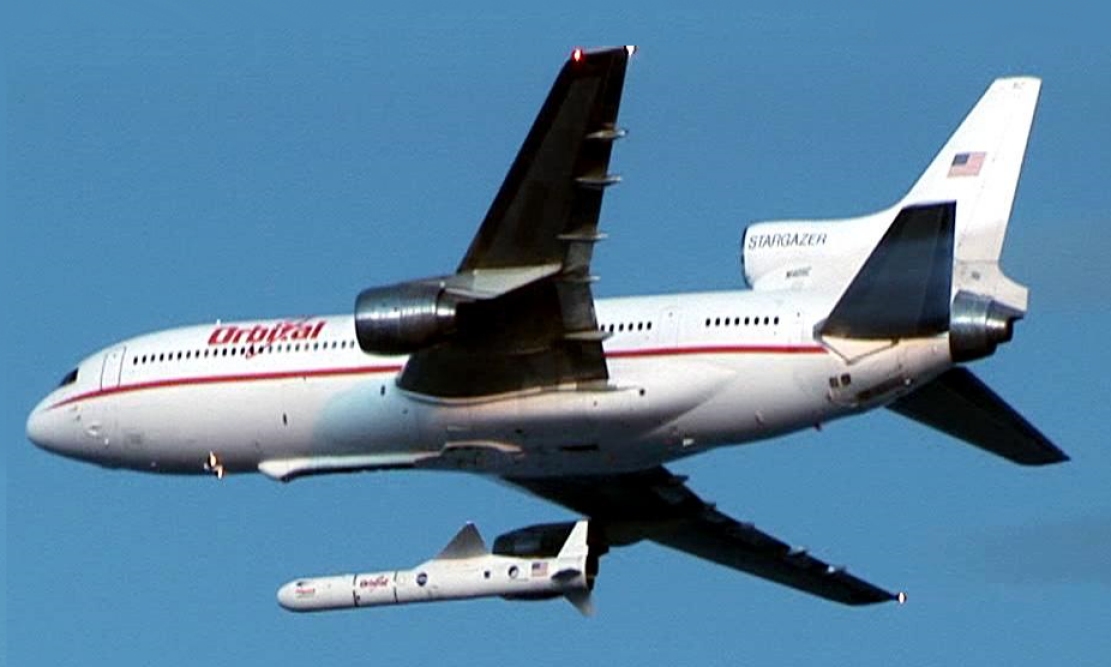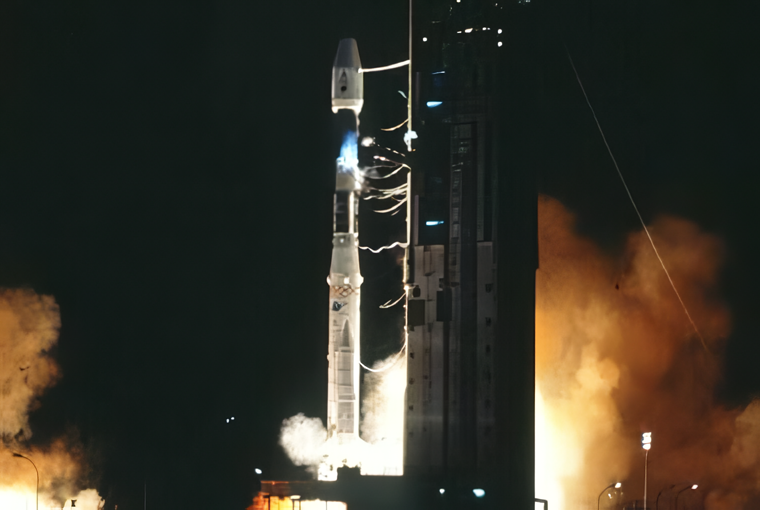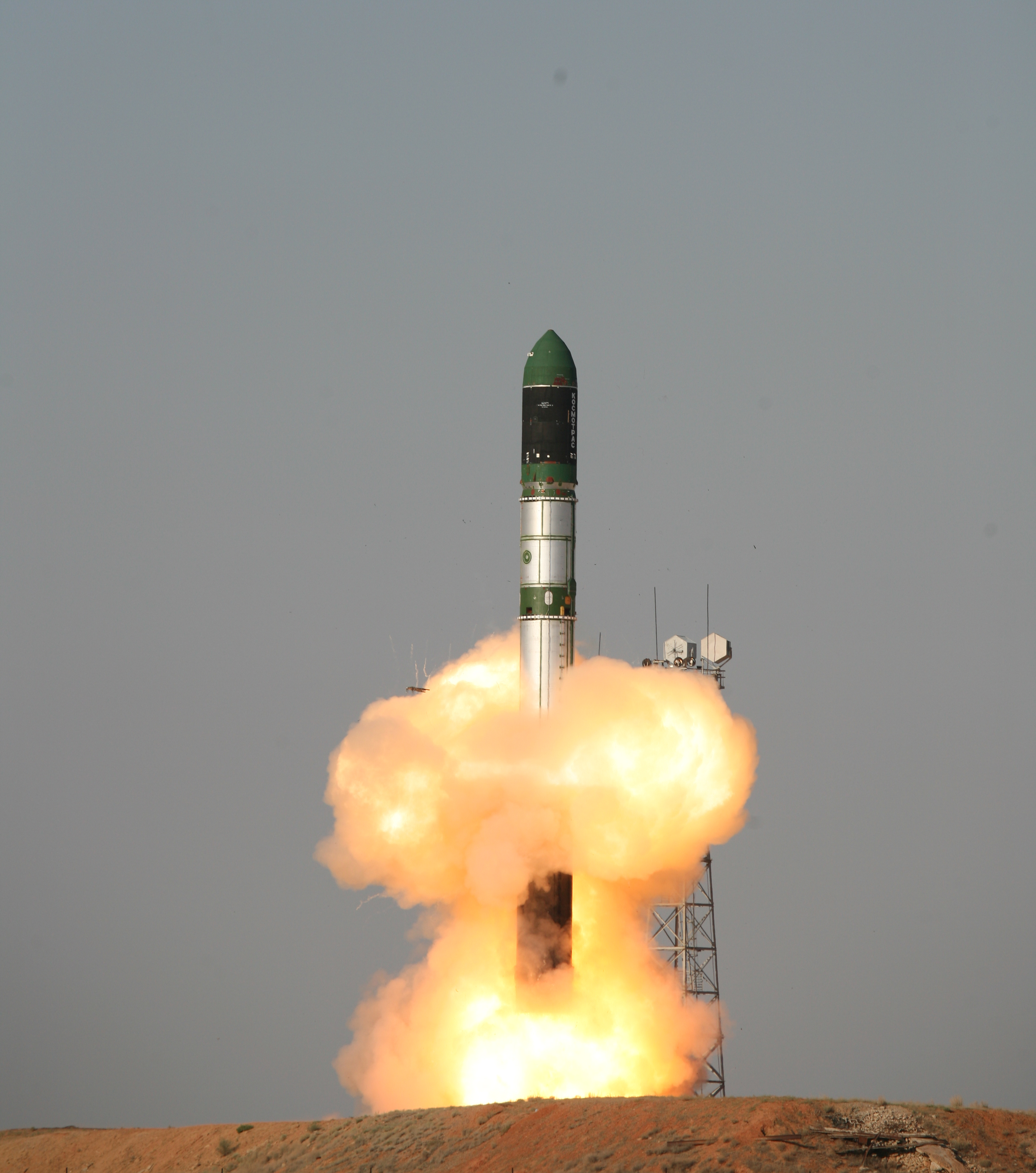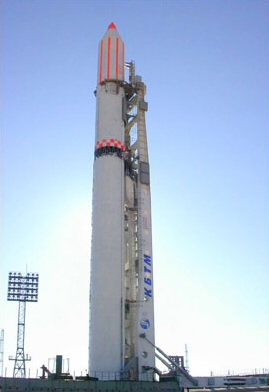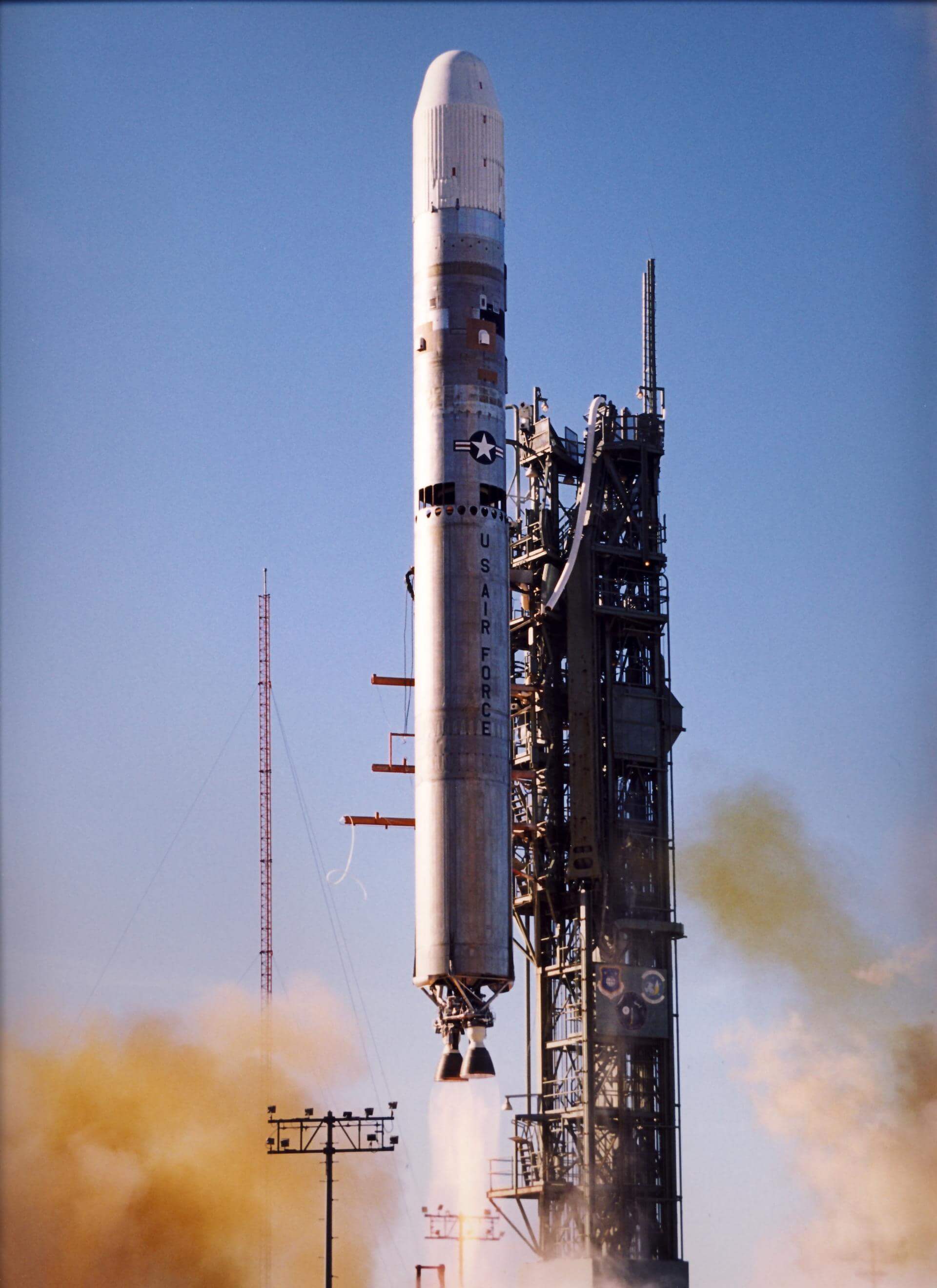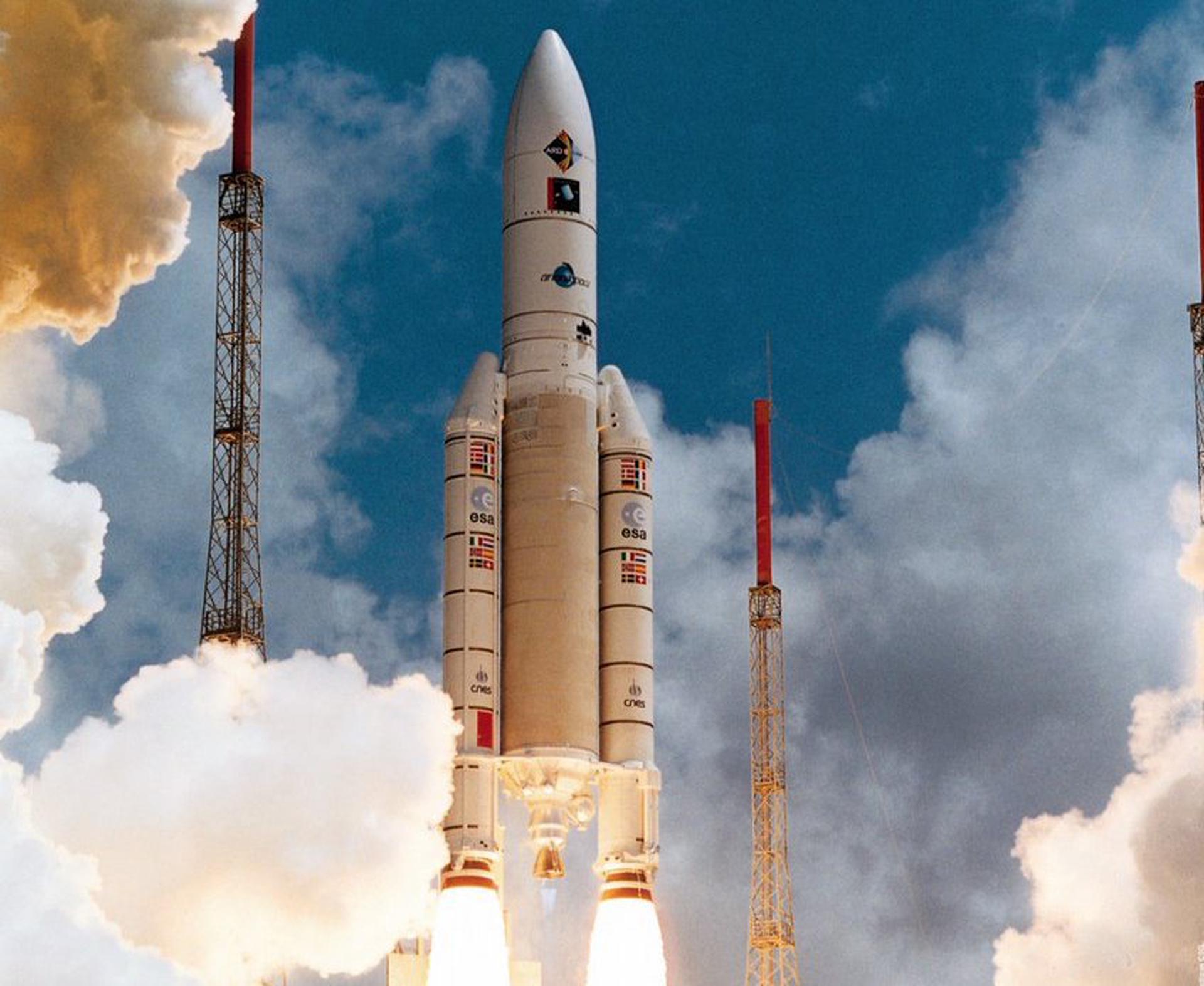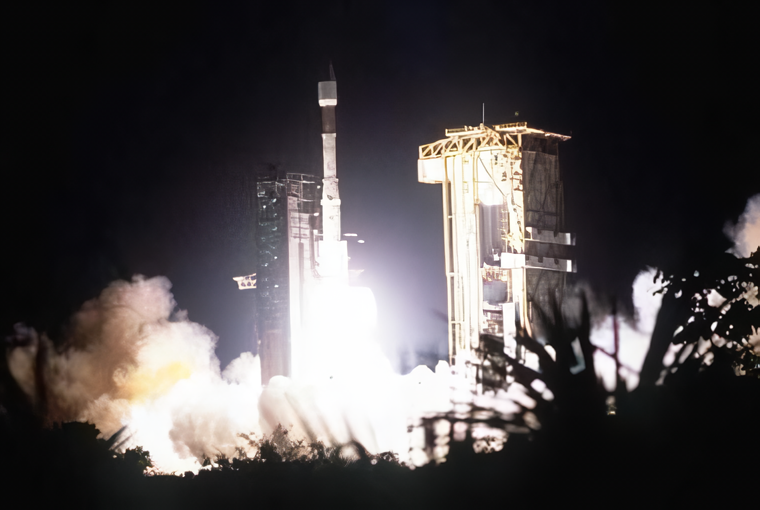Previous Spaceflight Launches
Filter by Agency, Locations or Vehicles
Show All LaunchesPegasus Hybrid | High Energy Transient Explorer 2 (HETE-2)
Orbital Sciences Corporation | United States of AmericaAir launch to orbit
Oct. 9, 2000, 5:38 a.m.
Ariane 42L | N-SAT-110
Aérospatiale | FranceGuiana Space Centre, French Guiana
Oct. 6, 2000, 11 p.m.
Status: Launch Successful
Mission:
The N-SAT-110 telecommunications satellite, designed and built for Space Communications Corporation (SCC) and JSAT Corporation of Tokyo, Japan by Lockheed Martin Commercial Space Systems (LMCSS), was launched successfully on 06.10.2000 from Kourou, French Guiana.
Geostationary OrbitProton-K/DM-2M | GE-1A
Khrunichev State Research and Production Space Center | RussiaBaikonur Cosmodrome, Republic of Kazakhstan
Oct. 1, 2000, 10 p.m.
Status: Launch Successful
Mission:
The GE-1A telecommunications satellite was designed and built by Lockheed Martin Commercial Space Systems (LMCSS) for Americom Asia-Pacific (AAP), a joint venture between GE American Communications and Lockheed Martin Global Telecommunications.
Geostationary OrbitSoyuz-U-PVB | Yantar-1KFT 20
Progress Rocket Space Center | RussiaBaikonur Cosmodrome, Republic of Kazakhstan
Sept. 29, 2000, 9:30 a.m.
Dnepr | SmallSat Rideshare
ISC Kosmotras | RussiaBaikonur Cosmodrome, Republic of Kazakhstan
Sept. 26, 2000, 10:05 a.m.
Status: Launch Successful
Mission:
Four small satellites were launched atop the Dnepr launch vehicle : MegSat 1, UniSat 1, TiungSat 1 as well as SaudiSat 1a and 1b. MegSat 1 is the second MegSat satellite. It is a LEO communications satellite. UniSat 1 is an Italian satellite developed and operated by GAUSS (La Sapienza University of Rome). TiungSAT-1 or MySat (Malaysian Satellite) is the first microsatellite for the Astronautic Technology (M) SDN. BHD. Company (ATSB) in Kuala Lumpur, Malaysia. Saudisat-1a and Saudisat-1b (Saudi Arabian Satellite) are the first Saudi Arabian micro satellites.
Low Earth OrbitZenit-2 | Orlets-2 2
Yuzhnoye Design Bureau | UkraineBaikonur Cosmodrome, Republic of Kazakhstan
Sept. 25, 2000, 10:10 a.m.
Titan II SLV | NOAA 16
Lockheed Martin | United States of AmericaVandenberg SFB, CA, USA
Sept. 21, 2000, 10:22 a.m.
Status: Launch Successful
Mission:
The NOAA K, L and M POES satellites begin the fifth generation of improved environmental monitoring in support of NOAA missions. The instrument payload has significant improvements and additions/deletions. The instrument changes have effected the spacecraft subsystems and data formats.
Sun-Synchronous OrbitAriane 5 G | Astra 2B & GE-7
ArianeGroup | FranceGuiana Space Centre, French Guiana
Sept. 14, 2000, 10:54 p.m.
Status: Launch Successful
Mission:
Astra 2B is one of the Astra communications satellite owned and operated by SES. Providing digital television and radio broadcast service to the UK and Republic of Island. GE-7 is also a commercial communications satellite owned and operated by GE American. Providing coverage to North America, Hawaii, the Caribbean islands and most of Mexico.
Geostationary Transfer OrbitSpace Shuttle Atlantis / OV-104 | STS-106
National Aeronautics and Space Administration | United States of AmericaKennedy Space Center, FL, USA
Sept. 8, 2000, 12:45 p.m.
Ariane 44P | Eutelsat W1
Aérospatiale | FranceGuiana Space Centre, French Guiana
Sept. 6, 2000, 10:33 p.m.
Status: Launch Successful
Mission:
Originally ordered by Orion Network Systems as Orion 2, the contract was later terminated. It was then bought by Eutelsat as spare satellite, called RESSAT, which was later renamed Eutelsat W1 as a replacement satellite compatible with their previously-launched W2 and W3 spacecraft. Eutelsat subsequently decided to launch W1 in September 2000. Located at the 10 degrees East position, the satellite serves a full range of applications that include that include business communications, Internet-based services and television transmission. It has 28 channels, 20 of which provide coverage of Europe, North Africa, the Middle East and central Asia via a fixed widebeam, with the remaining eight connected to a steerable spotbeam, to address new markets in geographical areas outside the widebeam coverage area (notably southern Africa). Services can be simultaneously provided within both coverages.
Geostationary Orbit